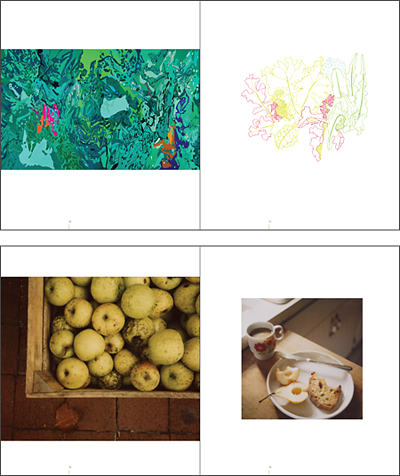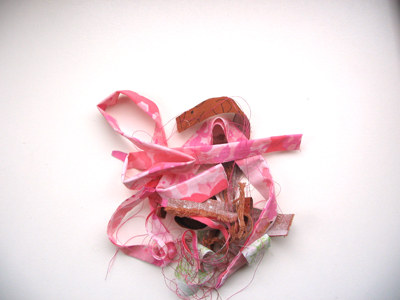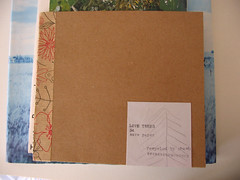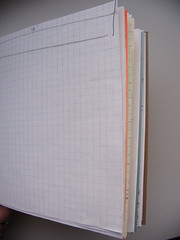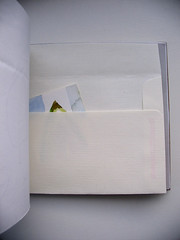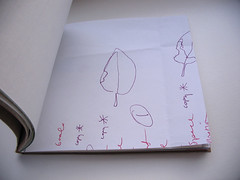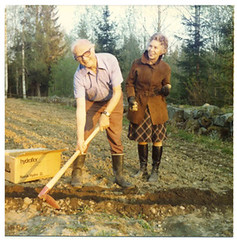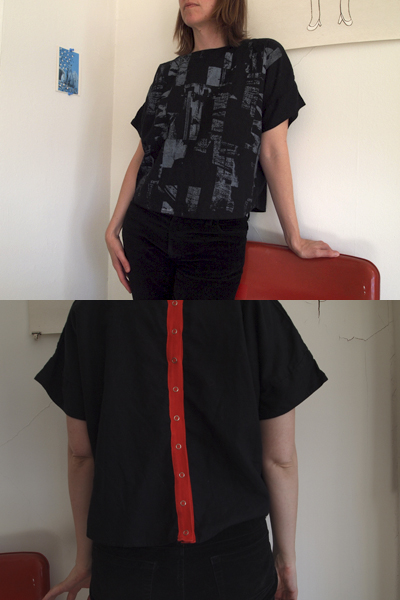
My clothes are disintegrating. Most are over ten years old. Moths have taken advantage of some of them as the clothes have hung on the line to dry. I’ve come to dislike shopping for clothes, even if I appreciate beautiful patterns, textures, cuts. I no longer get a consumer high if I buy a shirt from H+M. The last three years, I’ve bought almost no clothing (save bras and bathing suits) from big or corporate stores. But I’m finding it hard to find hand made, well crafted clothing that I like, even in DIY San Francisco. And I just would rather spend my money on a good cheese. But it is time to start replacing my beyond mending clothing. So my plan is to slowly build a long lasting wardrobe, one well crafted, ideally sustainably sourced/made garment at a time—one item a month.
Above is the first shirt I purchased under my slow clothing plan. The shoulder line isn’t flattering on me, but I really like the print, the red stripe down the back, the feel of the fabric and the company. Seems like the designer is thinking deeply about what she’s making and how it’s being produced—she’s a craftsperson.
Recently I read The Hidden Wound (1968–69 and afterword in 1988) by Wendell Berry, in which Berry writes a bit about craftspeople, though the book is primarily about race and community in the US. (Berry writes about his own experiences as a white boy growing up around black workers/friends on his family’s farm and about how those early experiences continue to inform his thinking about race relations and much more. The book sparks a lot of thought.) Here is the passage about craft:
The industrial laborer subserves an economic idea instituted in machines and in mechanized procedures. This is as far as possible from the work of the traditional craftsman or artist, whose making has never resembled what we now call “manufacture,” but is a cooperation and conversation of mind and body and idea and material. The true craftsman does not waste materials because his or her art involves respect for materials. And the craftsman’s products are not wasted because by their quality and durability they earn respect.
...
The great enemy of freedom is the alignment of political power with wealth. This alignment destroys the commonwealth—that is, the natural wealth of localities and the local economies of household, neighborhood, and community—and so destroys democracy, of which the commonwealth is the foundation and the practical means. This happens—it is happening—because the alignment of wealth and power permits economic value to overturn value of any other kind.
He goes on to mention what government could do to promote the improvement of communities and protection of the natural world. And since the government will not do what it takes—will not dissociate from corporate power—it will eventually come down to us to restore community life.
From reading the above bits, I think about how sitting in front of a computer all day at work (which, in the interest of full disclosure, for me is a place with altruistic intentions whose work is funded in large part by corporations) I miss that cooperation and conversation of mind and body and idea and material. My body tells me this regularly. It wants to move around more. My hands want to build and shape and fit, not just click. I think about how the powerful food industries block regulation and information that would (among other things) improve food safety, and about how most consumers only count the monetary cost of food (instead of also considering the toll of industrial ag on people and land ). I think about how as the climate crisis snowballs (bringing storms and food and water scarcity), we will be forced to rely on our communities, our local farmers. our craftspeople and friends. I think about how the erosion of our communities and the misuse of nature (through natural resources depletion, industrialism, pollution, “free” trade) is largely what brought on climate change in the first place.
So yeah, slow clothes in addition to slow food.

